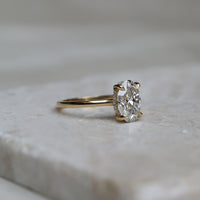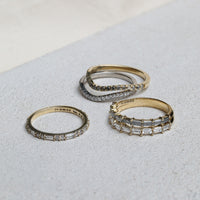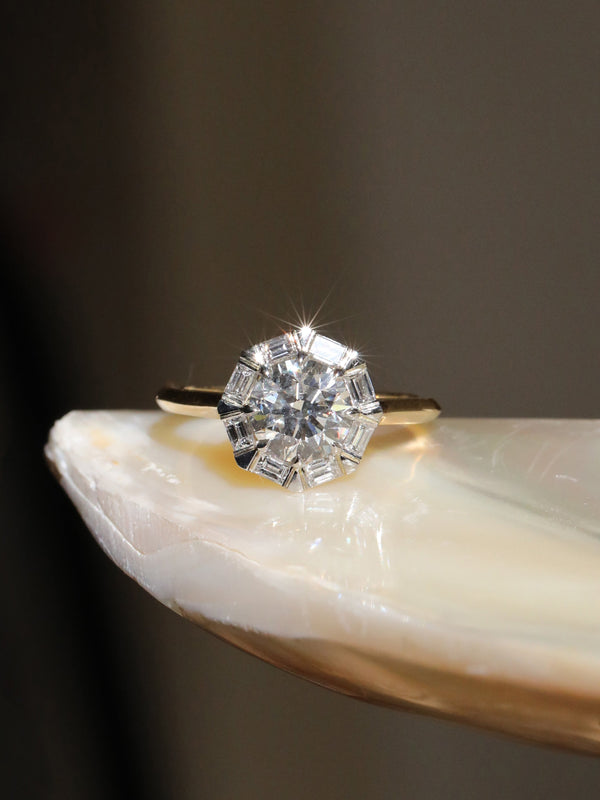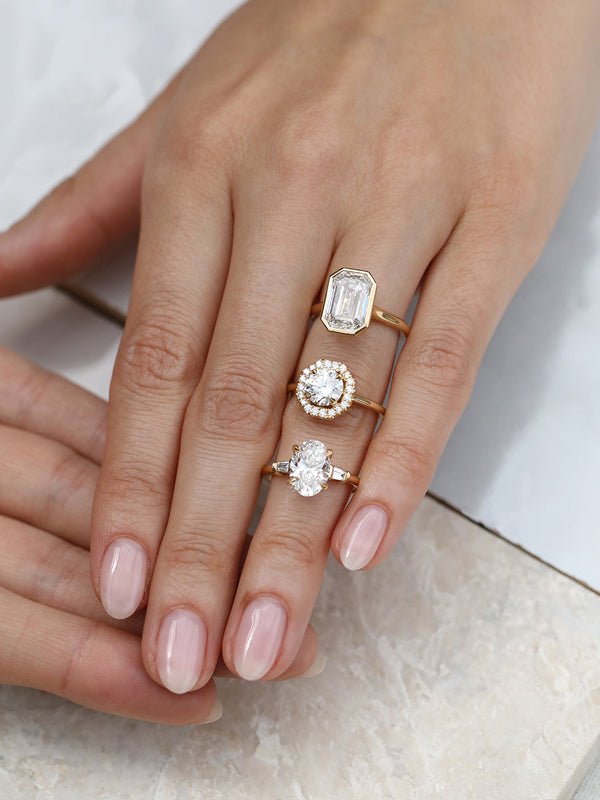Despite being created in the 1950s, it is only in recent years that lab grown diamonds have seen a sharp rise in popularity due to dramatic technological advances in their creation. And so, we are brought to the forefront of the current debate between lab grown and natural diamonds.
The topics we'll cover in this guide are:
- - HOW ARE DIAMONDS CREATED
- - TESTING
- - PRICE
- - ENVIRONMENTAL IMPACT
- - COLOUR

Lab Grown Emerald Cut Diamond
It can be a difficult conversation to navigate, with so many sources of information out there that don’t always align in their findings. That’s why we’ve dedicated this month to creating an impartial diamond guide, discussing the pros and cons of both lab grown and natural diamonds.
We’ll be talking to our team's qualified gemologists to bring you the facts and empower you to make your own decisions when choosing your diamond.
WHERE DO WE BEGIN?
Natural and lab grown diamonds are essentially identical in their chemical, physical and optical properties, and so both are considered real diamonds because of this. Essentially, they are both pure carbon.
Natural diamonds were formed deep in the earth’s mantle over the course of one to three billion years, while lab grown diamonds are created in controlled laboratory conditions in a matter of weeks.

They are mined (natural) or removed from their chamber (lab grown) as a rough diamond - pictured above- that is then sent to be mapped and cut by highly skilled diamond cutters. You can read more about the process here.
HOW DO THEY DIFFER?
TESTING
The only way to tell lab grown from natural diamonds is with specialised testing equipment. To the naked eye they are without difference, and it is only with specialised equipment, that the type of diamond can be confirmed. You can read more here.

Lab Grown Oval Cut Diamond
PRICE
Generally speaking, the lab grown diamonds we source are at this point in time a minimum of 50% cheaper than their natural mined diamond counterpart. A number of factors have an impact on this - for example the lab they are certified, more on this here - and so it can even be closer to 60 or 70% less than natural diamonds.
Discover a more detailed guide on how the prices of natural vs. lab grown diamond engagement rings compare here.


Natural (top) and lab grown (bottom) bespoke engagement rings
ENVIRONMENTAL CREDENTIALS
The environmental factors that differ in lab grown and natural diamonds are perhaps the hardest to judge. Although there are several studies that exist for the environmental impact of lab grown and natural diamonds, it’s important to look at who they are commissioned by and whether the company stands to gain anything from the results of the study.
One of our lovely clients, Daniel, recently spoke to Vogue about his choice of a lab grown diamond for environmental factors. You can read more here.

COLOUR
Salt and Pepper, Grey, Paler Yellow and Champagne diamonds are all only available as natural mined. This is because lab grown diamonds tend to focus on vivid hues in a coloured diamond, as they are the most popular, whereas natural diamonds, being uncontrolled in their creation, come in a wide range of paler colours, smokey hues and imperfect markings. Read more here

WHAT NEXT?
Still need some help deciding what’s for you? Book an appointment at our Shoreditch showroom and our team of jewellery specialists and certified gemologists will be on hand to answer any of your queries.
We also offer digital consultations for anyone unable to access the showroom here.
LEARN MORE
Take a deeper dive into any of these topic with our comprehensive guides below:
- - How to tell if a diamond is Natural or Lab Grown?
- - On the money: Lab Grown vs. Natural Diamonds
- - Life in Colour: Lab Grown vs Natural Diamonds
Sources:


















